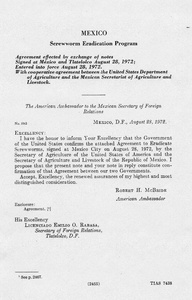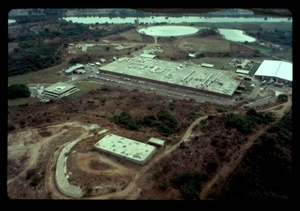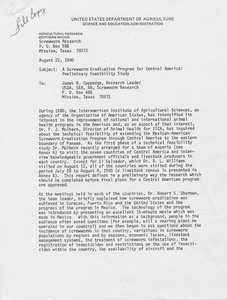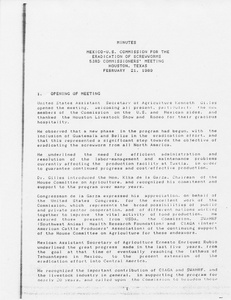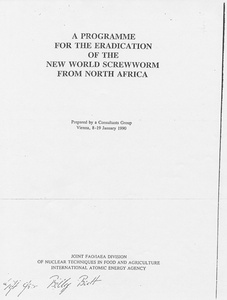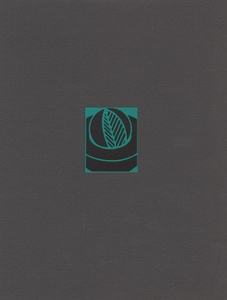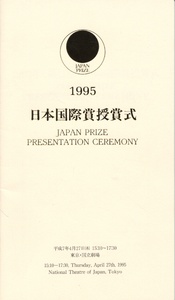International Cooperation
Eradication of New World Screwworm
Eradication of the New World screwworm depended on international cooperation. U.S. scientists knew that a Southwest eradication program would require efforts in Mexico. Agreements between USDA and the Mexican Department of Agriculture provided resources to extend the program south and to build a fly production facility in Tuxtla Gutierrez, Chiapas, Mexico. Opened in 1976, this plant took over fly production from the facility in Mission, Texas.
Broadened Scope of Eradication
As early as 1980 USDA and the Organization of American States studied the feasibility of expanding the program beyond Mexico's borders. In 1986, the Mexico-United States Commission and Guatemala established an eradication program. An agreement with Belize followed in 1988. By 1991, Animal and Plant Health Inspection Service (APHIS) had a 6-year action plan to eradicate the screwworm from all of Central and North America. In the Caribbean, interest in eradication programs included Jamaica. Sterile fly release began there in 1999.
Cooperation in North Africa
When imported livestock infested North Africa with the New World screwworm in 1990, potentially endangering the livestock, wildlife, and people in Africa and the Mediterranean, USDA agencies provided advice and assistance through the United Nations Food and Agriculture Organization. A multinational team used sterile insects from the production facility in Tuxtla Gutierrez, Chiapas, Mexico.
Benefits Beyond Screwworm Control
The techniques and technologies developed to control the screwworm, especially the Sterile Insect Technique (SIT), have been applied to other pests in North America, such as the Mediterranean fruit fly. Japan applied SIT to melon flies on Okinawa with great success. Other pests throughout the world have been eradicated, reduced, or controlled by the use of the SIT and related developments. The originators of SIT, Raymond C. Bushland and Edward F. Knipling, received the World Food Prize in 1992 for contributions to the well-being of the world population. Knipling also received the Japan Prize in 1995 for his contributions to Japanese agriculture.
 An official website of the United States government.
An official website of the United States government.


